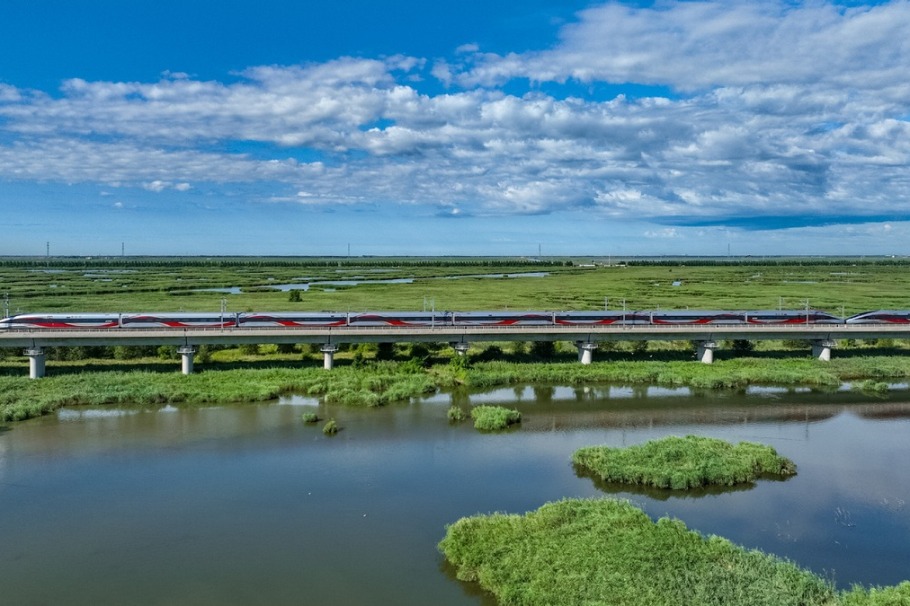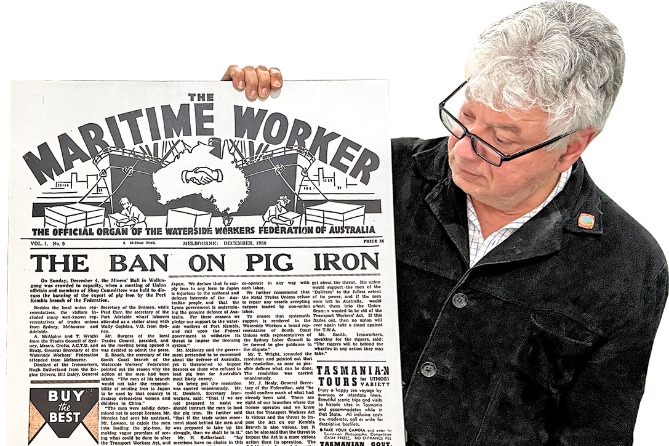SpaceX Starship fails midflight in 2nd run
Rocket's blastoff ends with explosion, but marks progress from first attempt

BOCA CHICA, Texas — SpaceX's uncrewed spacecraft Starship, developed to carry astronauts to the moon and beyond, failed in space shortly after lifting off on Saturday, cutting short its second test but making it further than an earlier attempt that ended in an explosion.
"Such an incredibly successful day," a SpaceX announcer said. "Even though we did have a ... rapid unscheduled disassembly of both the Super Heavy Booster and the ship."
The largest rocket ever built — SpaceX founder Elon Musk hopes it will one day be used to colonize Mars — blasted off from the company's Starbase in Boca Chica, Texas, shortly after 7 am, with all 33 booster engines firing as designed.
Unlike in the previous attempt in April, the booster rocket separated successfully from the mega ship but blew up, followed shortly by the spaceship itself.
Bill Nelson, head of NASA, which is awaiting a modified version of Starship to land humans on the moon, said Saturday's attempt showed progress.
"Spaceflight is a bold adventure demanding a can-do spirit and daring innovation," he said on social media platform X. "Today's test is an opportunity to learn — then fly again."
Compared with the first attempt to fly the spaceship in its fully stacked configuration back in April, SpaceX made it further into flight on Saturday, with the booster breaking away from the ship before disintegrating.
"As you could see, the Super Heavy Booster has just experienced a rapid unscheduled disassembly; however, our ship is still underway," an announcer said.
As the booster fell off, the upper stage started what was meant to be a partial trip around the Earth — it was scheduled to fall into the Pacific Ocean near Hawaii after 90 minutes — but it too blew up.
When the two stages of Starship are combined, the rocket stands 121 meters tall.
Its Super Heavy Booster produces 74.3 meganewtons of thrust, almost double that of the world's second most powerful rocket, NASA's Space Launch System, though the latter is now fully operational.
Both systems are designed to be fully reusable, a key element of SpaceX's design meant to greatly reduce costs.
Ill-fated debut
SpaceX was forced to blow up Starship during its first test flight four minutes after launch on April 20 because the two stages failed to separate. The rocket disintegrated into a ball of fire and crashed into the Gulf of Mexico, sending a dust cloud over a town several kilometers away.
After a monthslong investigation, the United States Federal Aviation Administration on Wednesday finally cleared SpaceX to try again, despite objections by conservation groups, which are suing the regulator, saying it failed to comply with environmental law.
SpaceX has insisted that explosions during the early stages of rocket development are welcome and help inform design choices faster than ground tests, though time is ticking down for a modified Starship to be ready for a planned lunar landing in 2025.
This time, Starship was modified to use "hot staging", which means the upper stage engines ignite while it is still attached to the booster, an approach that is commonly used in Russian rockets and can unlock far greater power.
Other changes included improvements to vents to decrease the likelihood of an explosion.
The first launch also caused massive damage to the launchpad at Starbase. It has now been reinforced with high-strength concrete and a system that jets tons of water to protect against the enormous heat and force generated by launch.
The Federal Aviation Administration said it was opening an investigation into what it called a "mishap "during Saturday's launch, in order to "identify corrective actions to avoid it from happening again".
"No injuries or public property damage have been reported," it said.
Carissa Christensen, CEO of the space analytics firm BryceTech in Virginia, said, "More things were successful than in the previous test, including some new capabilities that were significant.
"There's not money and patience for unlimited tests, but for a vehicle that is so different and so big, two, three, four, five tests is not excessive," Christensen said.
Jaret Matthews, CEO of the lunar rover startup Astrolab that has booked space on a future Starship flight, toured SpaceX's Starbase site earlier this year and said he expects the company to swiftly resume tests following Saturday's flight, though such a pace is expected to be driven largely by the aviation administration's review and the extent of Starship's technical failures.
Agencies Via Xinhua
Today's Top News
- China reaffirms sovereignty over Taiwan, says complete reunification unstoppable
- A-share market surges past 100 trillion yuan milestone
- No reason for Germany to let political expediency hurt relations with China
- Book on Xi's views on strengthening, revitalizing armed forces published
- China supports Ukraine peace talks between all parties
- China to hold press conference on military parade preparations





























